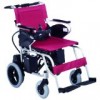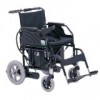与我们普遍持有的观念不同,外表相似的双胞胎,他们在遗传上并不相同。此项出人意料的研究,是由美国、瑞典及荷兰的科学家合作完成的,研究成果刊登在了《美国人类遗传学杂志》(American Journal of Human Genetics)上。研究中的发现可能对遗传疾病的研究及诊断方法具有重要意义。
这是怎么发生的——双胞胎中的一位患有帕金森病,而另一位却没有?此前,对这种现象的解释,更多的是从环境方面考虑。而现在,新的研究将这个问题更为复杂化了。
“尽管形态相似的双胞胎的基因组,它们的绝大部分是保持一致的,但我们的研究结果表明,还有极少量的区别,双胞胎的相同只不过是相对的相同。这对于我们深入理解遗传导致的疾病,是非常有帮助的。”Jan Dumanksi介绍说。他是此项研究的主持者之一。
“为揭示双胞胎中仅一位患病的情况,我们开发出了一种方法,可以用于跟踪导致这些疾病的遗传突变。”Carl Bruder说道。
研究者总共研究了19对双胞胎,发现他们确实有着相同的DNA,但是在个别DNA片段的拷贝数方面却有可能存在差异。例如,有些片段在其中的一位双胞胎中可能不存在,也可能拷贝数更多。这可能可以用于解释为何一位双胞胎换上一种疾病,而另一位却正常的情况,科学家分析道。
资料来源: Uppsala University(生命经纬)
生物谷推荐原始出处:
The American Journal of Human Genetics,
doi:10.1016/j.ajhg.2007.12.011
Report
Phenotypically Concordant and Discordant Monozygotic Twins Display Different DNA Copy-Number-Variation Profiles
Carl E.G. Bruder1, , , Arkadiusz Piotrowski1, Antoinet A.C.J. Gijsbers2, 3, Robin Andersson4, Stephen Erickson5, Teresita Diaz de Ståhl6, Uwe Menzel6, Johanna Sandgren7, Desiree von Tell1, Andrzej Poplawski1, Michael Crowley1, Chiquito Crasto1, E. Christopher Partridge1, Hemant Tiwari5, David B. Allison1, 5, Jan Komorowski4, Gert-Jan B. van Ommen2, 3, Dorret I. Boomsma8, Nancy L. Pedersen9, Johan T. den Dunnen2, 3, Karin Wirdefeldt9 and Jan P. Dumanski1, 6
1 Department of Genetics, University of Alabama at Birmingham, Birmingham, AL 35294-0024, USA
2 Center for Human and Clinical Genetics, Leiden University Medical Center (LUMC), 2300 RC Leiden, The Netherlands
3 Center for Medical Systems Biology, 2300 RA Leiden, The Netherlands
4 Linnaeus Centre for Bioinformatics, Uppsala University, SE-75124 Uppsala, Sweden
5 Section on Statistical Genetics, Department of Biostatistics, University of Alabama at Birmingham, Ryals Public Health Building, Suite 327, Birmingham, Alabama 35294-0022, USA
6 Department of Genetics and Pathology, Rudbeck Laboratory, Uppsala University, SE-751 85 Uppsala, Sweden
7 Department of Surgical Sciences, Uppsala Academic Hospital, Uppsala University, SE-751 85 Uppsala, Sweden
8 Department of Biological Psychology, VU University, Van der Boechorststraat 1, 1081 BT Amsterdam, The Netherlands
9 Department of Medical Epidemiology and Biostatistics, Karolinska Institutet, SE-171 77 Stockholm, Sweden
Corresponding author
Abstract
The exploration of copy-number variation (CNV), notably of somatic cells, is an understudied aspect of genome biology. Any differences in the genetic makeup between twins derived from the same zygote represent an irrefutable example of somatic mosaicism. We studied 19 pairs of monozygotic twins with either concordant or discordant phenotype by using two platforms for genome-wide CNV analyses and showed that CNVs exist within pairs in both groups. These findings have an impact on our views of genotypic and phenotypic diversity in monozygotic twins and suggest that CNV analysis in phenotypically discordant monozygotic twins may provide a powerful tool for identifying disease-predisposition loci. Our results also imply that caution should be exercised when interpreting disease causality of de novo CNVs found in patients based on analysis of a single tissue in routine disease-related DNA diagnostics.







